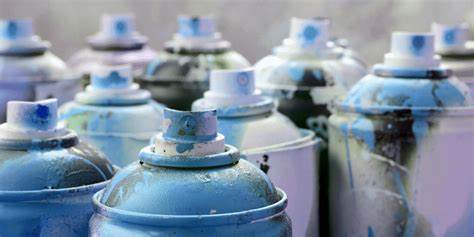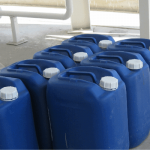Are you looking for a safe way to dispose of aerosol cans? Look no further! Disposing of aerosol cans can be tricky, but with the right steps, you can get rid of them in an environmentally friendly and safe manner.
Did you know that improper disposal of aerosol cans can have serious consequences? From damaging the ozone layer to releasing toxic chemicals into the air, it’s essential to dispose of aerosol cans correctly.
In this post, we’ll cover everything from proper storage techniques to recycling options and hazardous waste disposal guidelines.
Plus, we’ll give you some tips on how to make sure your disposal process is as eco-friendly as possible. Ready to learn more about safe aerosol can disposal?
Let’s get started!
How Do You Empty an Aerosol Can Safely?
Contents
- 1 How Do You Empty an Aerosol Can Safely?
- 2 How to Safely Dispose of Aerosol Cans
- 3 How do you dispose of aerosol hair products?
- 4 Can aerosols go in the bin?
- 5 Are aerosol cans hazardous waste in California?
- 6 What are the Alternatives to Aerosol Cans?
- 7 Recycling Aerosol Cans
- 8 Properly Labeling and Transporting Aerosols for Disposal
- 9 Conclusion
Be safe when emptying aerosol cans. Always read the label on the can before starting.
Never puncture, crush, or burn the can, as this could cause an explosion or fire. Place the can in a well-ventilated area and use a towel to cover the nozzle.
Point the nozzle away from your face and body, then slowly press down on the valve button until all of the contents have been released.
Dispose of any remaining contents according to local regulations and guidelines for safe disposal. Following these steps will help you safely empty your aerosol cans.
How to Safely Dispose of Aerosol Cans
Check Local Regulations
When disposing of aerosol cans, it is important to first check local regulations to ensure that the disposal process is compliant with the laws.
Depending on the area, aerosol cans may need to be taken to a hazardous waste facility or special collection event.
It is also important to check if the cans are still pressurized, and if so, they should not be disposed of in regular garbage.
Dispose of Cans at a Hazardous Waste Facility
If local regulations require aerosol cans to be disposed of at a hazardous waste facility, it is important to follow the guidelines set out by the facility.
Most facilities will require that cans be empty and punctured before they can be accepted for disposal.
It is also important to make sure that all aerosol cans are placed in a sealed container before being taken to the facility.
Recycle Aerosol Cans
Many aerosol cans can be recycled, either through curbside recycling programs or at a local recycling center.
It is important to check with your local recycling center or municipality regarding what types of aerosol cans can be recycled in your area.
Generally, aerosol cans must be empty and have their lids removed before they can be recycled.
Reuse Aerosol Cans
Aerosol cans can often be reused for other purposes, such as storing small items or creating art projects.
If an aerosol can is still in good condition and has not been used for its original purpose, it can often be reused for other projects around the house or garden.
Donate Unused Aerosol Cans
If an aerosol can has not been used and is still in good condition, it may be possible to donate it to a local charity or organization that accepts donations of household items.
This can help reduce waste and ensure that the aerosol can does not end up in a landfill.
How do you dispose of aerosol hair products?
It’s essential to know how to dispose of them safely. Empty aerosol cans should be placed in the regular trash. However, if they are not empty, they must be recycled or taken to a hazardous waste facility.
Make sure to use up any remaining product before getting rid of the can. Never puncture or burn an aerosol can, as this could cause a fire or explosion.
If you have an aerosol can that is still partially full, take it to a local hazardous waste facility for proper disposal.
Can aerosols go in the bin?
You may be wondering if they can be recycled. The answer is that it depends on where you live.
Check with your local recycling center to find out if they accept aerosol cans. If they do, make sure the cans are empty and the lids are removed before putting them in the bin. Never put any full or pressurized cans into the bin, as this could cause a fire hazard.
If your local recycling center doesn’t accept aerosol cans, take them to a hazardous waste disposal facility for safe disposal.
So, now you know what to do with those old aerosol cans. Check with your local recycling center first and remember not to put any full or pressurized cans into the bin.
Are aerosol cans hazardous waste in California?
It’s important to know that these cans are classified as hazardous waste by the California Department of Toxic Substances Control.
This means that they need to be disposed of properly to avoid potential environmental and health risks.
So don’t put them in regular trash bins or recycling centers – instead, take them to a household hazardous waste disposal facility or an aerosol can recycling center.
These facilities will separate the contents and dispose of them according to environmental regulations, helping protect our environment and keeping everyone healthy.
What are the Alternatives to Aerosol Cans?
There are plenty of alternatives to aerosol cans that are both eco-friendly and economical.
Pump spray bottles are great for air fresheners, hair styling products, and cleaning solutions. They’re easy to use and help reduce waste.
Trigger spray bottles are also budget-friendly and can be used for the same types of products.
Refillable containers are becoming increasingly popular. These containers are often made from glass or plastic and can be reused multiple times for the same product. They work great for liquid soap, hand sanitizer, and other similar items.
Finally, there are also aerosol-free alternatives such as foam dispensers or pressurized bottles that use compressed gases or liquids instead of propellant gases like aerosol cans do.
So if you’re looking for an eco-friendly way to deliver your products, consider these alternatives.
Recycling Aerosol Cans
Do you have aerosol cans in your home? You can recycle them! Recycling aerosol cans helps reduce waste and conserve resources. Here’s how:
First, check the product label to make sure there are no hazardous materials. If so, they must be disposed of as hazardous waste at an appropriate facility. Otherwise, take them to a local recycling center.
Before taking them to a recycling center, make sure they are empty. Puncture the can or drain the contents into a container to do this safely. Then you’re ready for recycling.
Remember: aerosol cans should not be placed in curbside recycling bins; take them directly to a local recycling center. So next time you’re cleaning out your pantry or garage, don’t forget about those aerosol cans – recycle them and help protect our environment.
Properly Labeling and Transporting Aerosols for Disposal
Are you aware of the proper way to label and transport aerosol cans? Knowing how to handle these items safely is essential for everyone’s protection.
When disposing of aerosols, make sure to label them with the contents, date of manufacture, and any other relevant information.
Labels should also include instructions for safe handling and disposal.
Aerosols must be transported upright in a well-ventilated area. Place them in an approved container or box labeled “Aerosol Cans” or “Hazardous Waste.”
Keep aerosols away from heat sources, sparks, and open flames, as these can cause explosions or fires. When transporting aerosols for disposal, follow all local laws and regulations regarding hazardous waste transportation.
It’s important to take extra precautions when dealing with aerosol cans to keep everyone safe.
Conclusion
To ensure the safe disposal of aerosol cans, make sure they are empty and wear protective gear such as gloves and eye protection.
If the can is empty, it can be placed in the regular trash. However, if not empty, recycle it or take it to a local recycling center or hazardous waste facility.
Additionally, consider alternatives such as pump spray bottles, trigger spray bottles, refillable containers and aerosol-free alternatives like foam dispensers or pressurized bottles for eco-friendly and economical solutions.
When transporting aerosols for disposal label them correctly and transport them upright in a well-ventilated area away from heat sources, sparks and open flames. Doing so will help protect the environment and your health.





